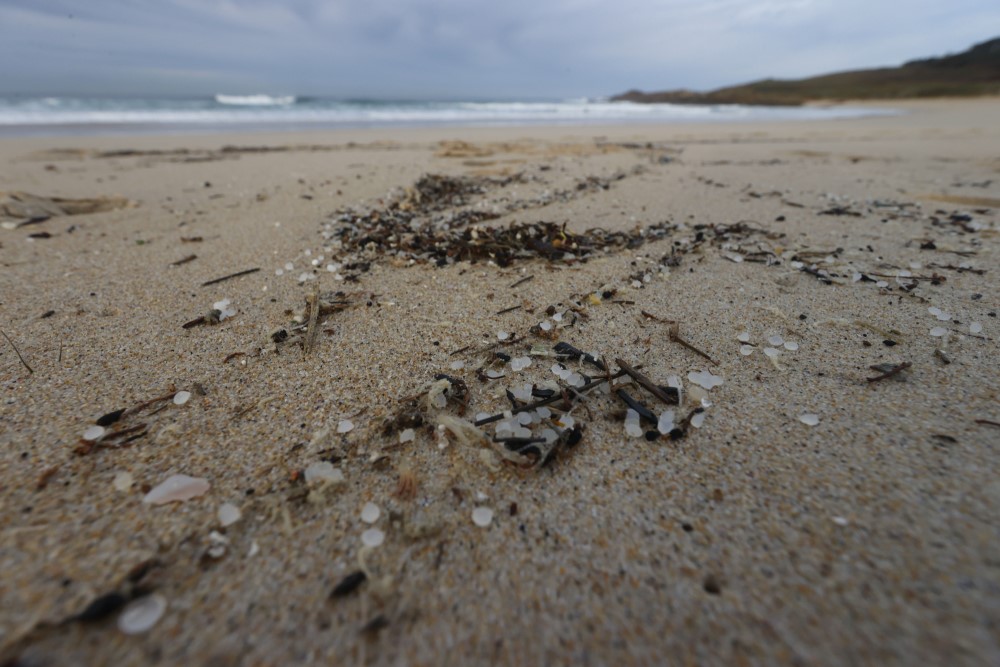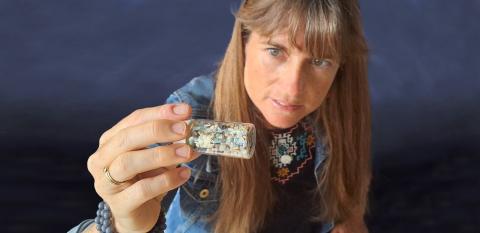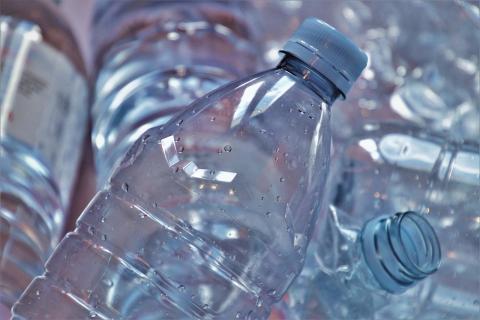Reactions to the dumping of plastic pellets near the Galician coasts
A spill of plastic pellets from containers from the merchant ship Toconao has reached several areas of the Galician coastline. For its part, the Government of Asturias has upgraded the Accidental Marine Pollution Plan to phase 2 due to the detection of microplastics on the coast.
Added information about the situation on the Asturian and Cantabrian coasts.

Volunteers, environmental associations and the affected municipalities themselves have been organising for days to clean up the Galician beaches affected by the dumping of millions of plastic pellets after the loss of up to six containers by the ship Tuconao in Portuguese waters. Microplastics wash up on Doniños beach in Ferrol. EFE/ Kiko Delgado.
Morales -Pellets (EN)
Carmen Morales
Lecturer at the University of Cadiz, researcher at the Institute of Marine Research (INMAR) and Scientists Coalition for an Effective Plastics Treaty
The dumping of pellets in Galicia is very bad news. These small plastic spheres are highly persistent in the natural environment. Given their buoyancy, they can be dispersed by currents, which makes their recovery very difficult. Over time, some of these plastics will reach the coasts, as we are already seeing, but others will remain out of sight, either because they have been transported offshore or because they increase in density and end up sinking, becoming entangled with organic matter or buried in the sediments.
In addition to the obvious visual impact, these spheres have a size range that means they can be mistaken for food and consumed by marine organisms; once ingested, the pellets can cause physical damage, such as that generated by altering food intake or by abrasion, and also at other levels, such as endocrine disruption or impacts from associated toxic substances.
All this is happening at a time when a Global Plastics Treaty is being negotiated, with great difficulty, with a special focus on the marine environment. For this tool to be effective and for the plastic tide suffered by Galicia not to be repeated anywhere in the world, it must be based on scientific evidence and the precautionary principle.
Pellets - Eljarrat (EN)
Ethel Eljarrat
Director of the Institute of Environmental Assessment and Water Studies (IDAEA-CSIC)
This is an accident that has caused massive contamination by plastic material that is very difficult to remove. Once in the marine environment, these particles will be fragmented into smaller pieces by waves and solar radiation, and the smaller the plastic material is, the more toxic it is, the easier it is to get into living beings.
The damage is caused by chronic and continuous exposure and nothing will happen to us by touching these materials as is being said, as it is not acute toxicity. In the case of marine animals they can cause two types of problems. On the one hand a physical impact, because it can obstruct their digestive tract and they can die from starvation. On the other hand, chemical damage, caused by the additives that may be associated with these pellets. It has been mentioned that some of them may contain sunscreens, and it is known that some of them can be very toxic. Even if they are not and are more inert compounds, such as PET, these plastics act as sponges that accumulate other pollutants in the marine environment, so they can also cause chemical damage.
If we consume these fish, we will accumulate whatever they have accumulated when we eat them. We know that there is no zero contamination in fish, and although it is too early to assess the magnitude of this episode, this spill will lead to higher levels of contamination.
Herrera - Pellets (EN)
Alicia Herrera Ulibarri
Viera y Clavijo" researcher of excellence in the EOMAR IU-ECOAQUA research group at the University of Las Palmas de Gran Canaria
These pellets represent a very serious environmental problem, as they can remain in the environment for a long time - between 50-70 years - and degrade into smaller particles forming microplastics. The danger to marine organisms is, on the one hand, the physical damage their ingestion can cause, and on the other hand, the damage caused by the associated chemical contaminants.
These chemical contaminants may be in the pellets, if they contain any additives, or they may be acquired from the environment. There are chemical contaminants that are in very low concentrations in the environment, but they stick to the walls of the pellets and this causes them to concentrate there, making them more dangerous to marine organisms that ingest them.
Studies on pellets collected in the Canary Islands found more than 80 types of associated contaminants, including pesticides, flame retardants and UV filters.
Moreover, in experiments carried out on fish fed with feed and 10% microplastics and pellets that the EOMAR group collected from beaches and which had chemical pollutants associated with them, it has been found that these chemical pollutants passed into the fish's liver.
That is why, according to the ECOAQUA institute's research group, in the case of pellet dumping on the coasts of Galicia it is essential to have all the information about these products, what type of plastic it is, if the pellets contain additives and if the technical data sheet contains any kind of specification in this regard. In addition, it is important to remove the pellets quickly from the coast, thus preventing them from getting mixed with sand and algae, which makes it much more difficult to collect them.



